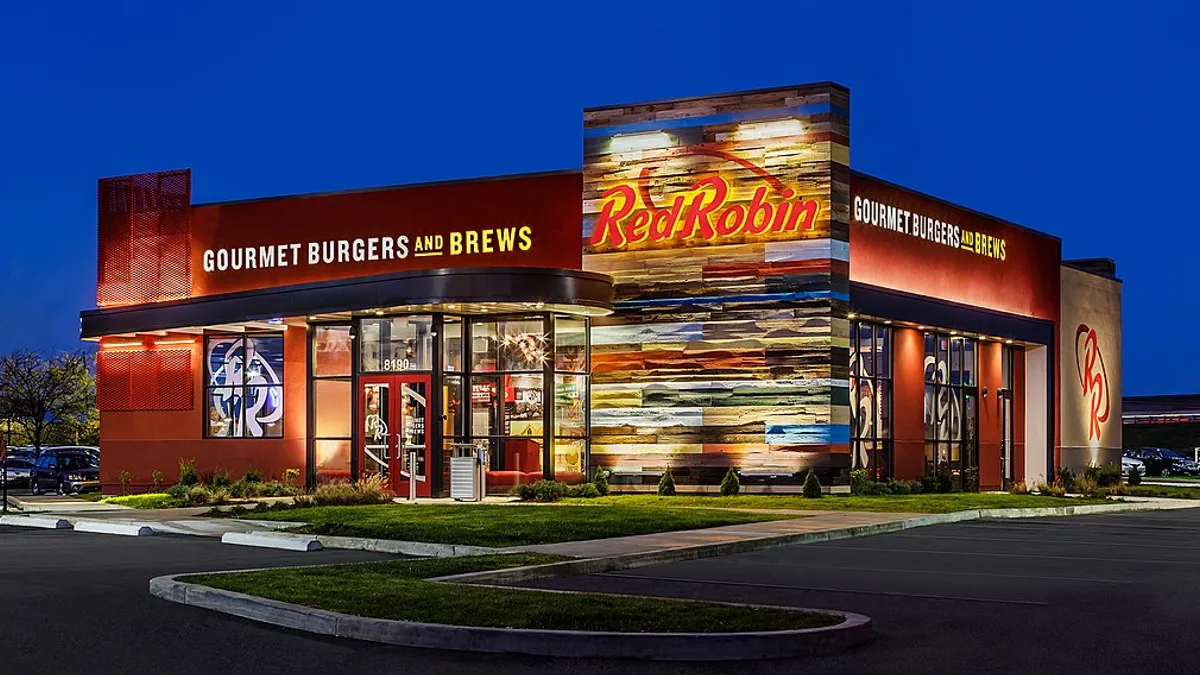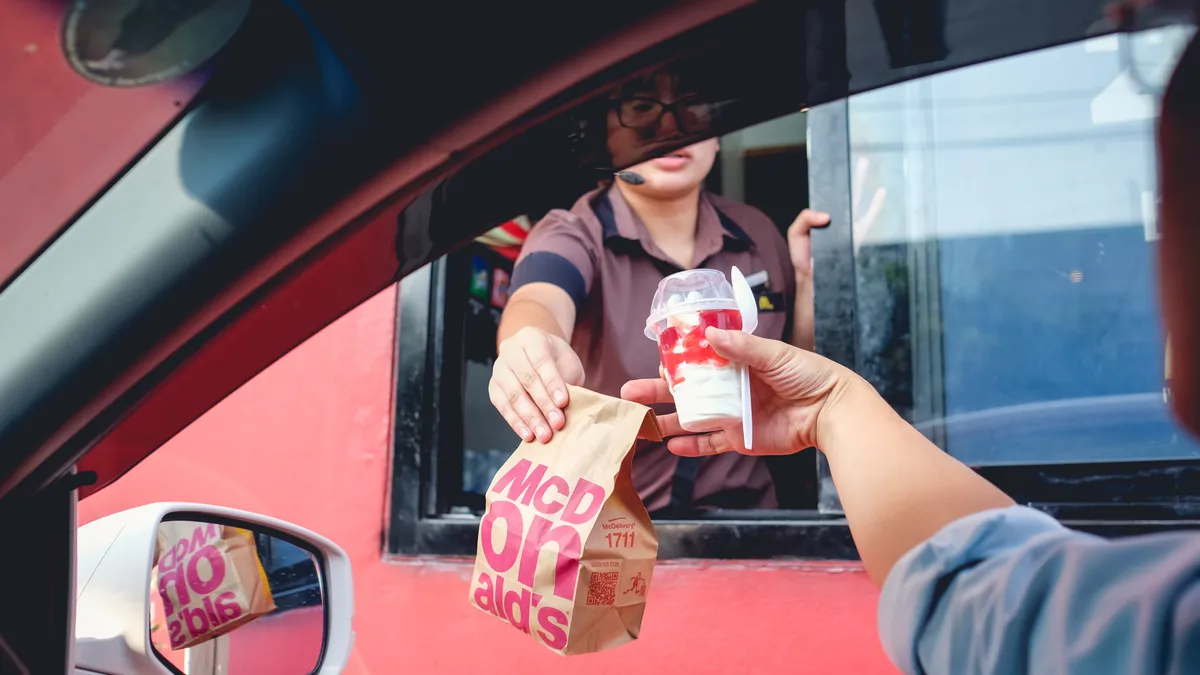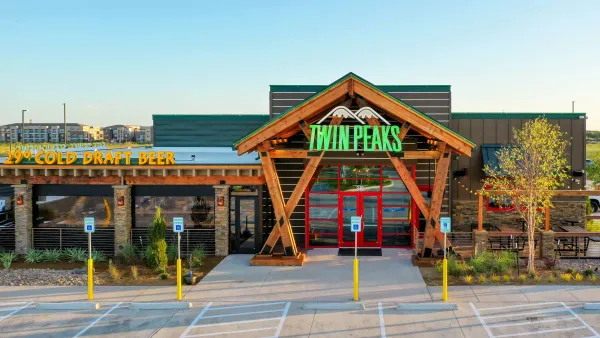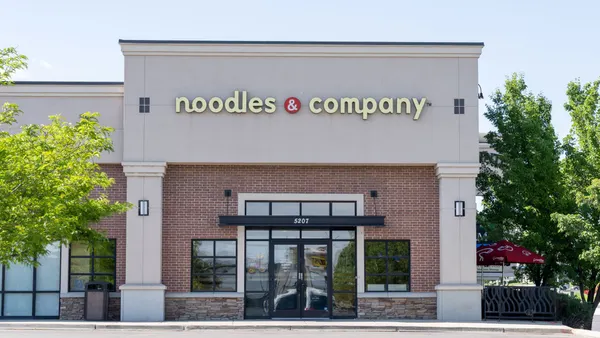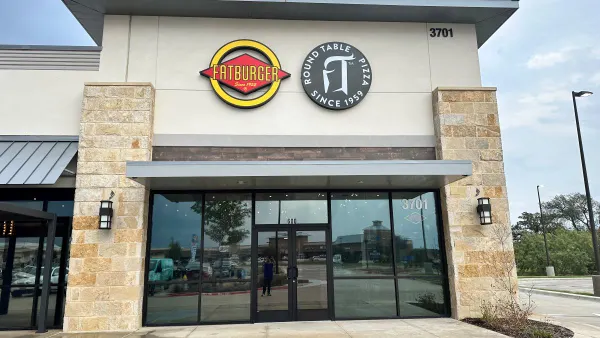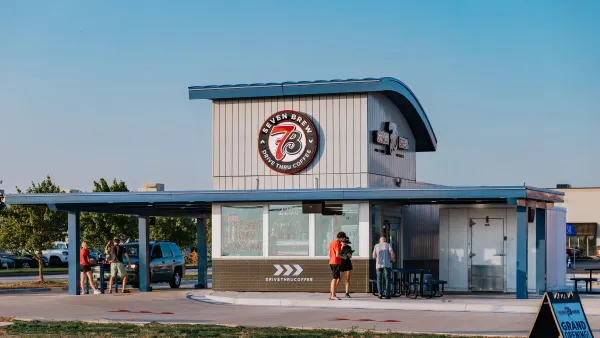Dive Brief:
- Red Robin will refranchise some stores and cut costs across its system to strengthen its balance sheet as part of a new strategic plan called First Choice.
- In an investor call Tuesday, CEO and President David Pace said refranchising would be a limited, tactical measure. “This is not a fundamental shift in our operating strategy to a more asset-light model,” Pace said. Red Robin intends for the majority of its stores to remain corporate operated.
- First Choice preserves many of the changes made under former CEO GJ Hart’s North Star program, but it appears to place a greater emphasis on paying down debt.
Dive Insight:
While the North Star plan eventually generated same-store sales growth, the benefits were fleeting. Same-store sales are projected to drop 4% in the second quarter of 2025, the chain said in its Monday announcement.
Faced with this drop, Red Robin’s reworked plan will aim to strengthen its balance sheet, which includes more than $164 million in long-term debt and $327 million in long-term lease liabilities, according to its latest 10-Q.
Todd Wilson, the company’s CFO, said the refranchising likely wouldn’t alter the chain’s 2025 performance or have “any material impact.” Transactions are expected to be completed in early 2026, he said.
“We see an opportunity for current franchisees to gain a larger footprint in their Red Robin holding,” Pace said.
Executives said refranchising will reduce debt to the level where Red Robin could refinance. Pace said the brand might end up at about 65% to 75% company operated, which would imply selling off up to 15% of its store system.
Earlier this year, the brand said it was analyzing options for a number of underperforming units. This could result in up to 70 closures during the next five years. Red Robin did not offer an update on this process.
Pace said offloading restaurants entails balancing the returns gained from selling the locations to franchisees with the loss of revenue Red Robin would gain if it continued to own them.
“You don't want to leave money on the table,” Pace said. “And you don't necessarily want to sell off your highest performance.”
The chain has partnered with Brookwood Associates to launch a marketing effort to bring “proven operators into the Red Robin family,” he added.
The company is also working to reduce corporate expenses by $10 million annually, but Pace and Wilson shared few details on the changes.
Additionally, the brand will make investments in updating customer-facing design features, but that this would not be a full remodel program.
The First Choice program will be accompanied by new promotions, including the Big Yum Deal, a $9.99 combo that includes a Red Double Tavern Burger, bottomless side and a beverage.
Wilson said the Big Yum deal, which launches next Monday, “puts us on a competitive playing field, from a price point standpoint, at least with a lot of the other competitors out there.”
The deal is similar to Chili’s 3 For Me Big Smasher Burger offer, which helped that brand establish a strong value proposition compared to QSRs.



